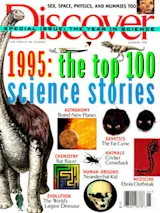The idea behind sequencing an organism’s genome--decoding, letter by letter, the message contained in every last one of its genes--is that it would tell us a lot about how the organism works. We would know the basic structure of every last one of its proteins: every enzyme in its metabolism, every signal-bearing hormone coursing through its body, every receptor poised to receive those signals on the surface of its cells. We would own that organism--or at least we’d have the owner’s manual. Geneticists have dreamed of such knowledge for decades and have talked about it as a real possibility for seven years or so. This past year they got it for the first time, albeit only for a bacterium. And they made huge strides toward getting it for a far more interesting organism, Homo sapiens.
Both milestones were achieved by an upstart organization called the Institute for Genomic Research in ...














